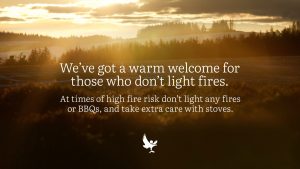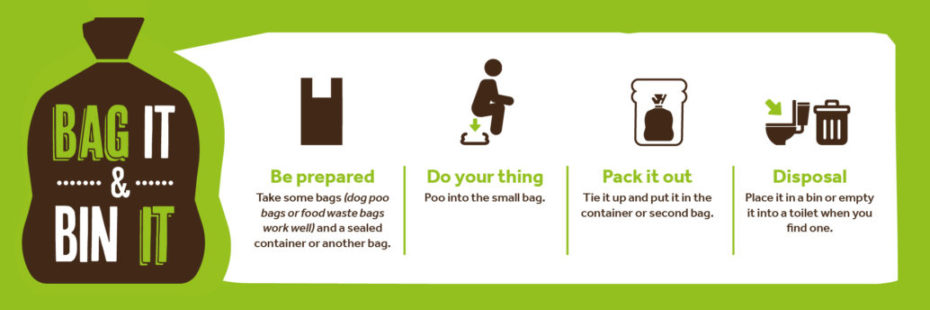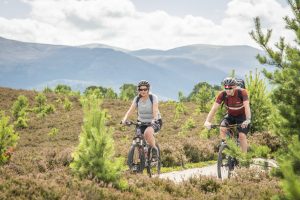Outdoor Access Advice
You can help keep the Park a special place by enjoying the outdoors responsibly. Please follow all on site signage, advice from rangers and estate staff, and the Scottish Outdoor Access Code.
Find out more below about how you can 'tread lightly' and help look after the Cairngorms National Park.

Dogs in the Park
We love dogs here in the Cairngorms National Park, but we just ask you to ‘Take the Lead’ and follow some simple guidance:
- We ask that you keep your dog on a short lead or close to heel when enjoying a walk, particularly between April and August in areas with ground-nesting birds or young livestock.
- In woodlands with Capercaillie, on the high tops with Ptarmigan, in farmland with waders follow all local signage and keep your dogs on a lead where requested.
- On farmland during lambing season, please do not enter fields with young animals, and keep your dogs on the lead when near any livestock.
- Please also ensure you clean up after your dog and put any waste in a bin, or in more remote areas take it away or remove it off the path.
There are certain times when in order to act responsibly, you should put your dog on a short lead or keep it close at heel.
These include:
- During the bird breeding season (usually April – mid August) in areas such as moorland, forests, grasslands, loch shores to avoid disturbing birds that nest on or near the ground.
- In areas where livestock are present. Please keep as far away from animals as possible.
- In busy recreational areas and public places to avoid causing concern to others.
Wildfires, Campfires and cooking
Please do not light a campfire in the National Park, use a stove for cooking – these are a much safer alternative.
- The woodlands and peatlands of the Cairngorms are internationally important and can easily catch fire, one spark is all it takes to accidently start a wildfire.
- Wildfires are surprisingly common and quickly burn through trees and vegetation and through the peat in the ground. Habitats are destroyed, wildlife killed, property damaged and people’s livelihoods impacted.
- Collecting wood or cutting down trees for firewood is damaging to the environment. Dead wood is an important part of a healthy ecosystem – it provides a habitat, food and shelter for wildlife and as it rots releases nutrients back into the soil.
- There is almost no-where in the Park to light a campfire responsibly. The Scottish Outdoor Access Code says you should not light a campfire in woodland or forest, on peaty ground, farmland or cultural heritage sites or near buildings. We need everyone to lead by example, so please be responsible and do not light a campfire anywhere.
At times of High Fire Risk – please take extra care with stoves, do not light any fires and don’t use barbecues.
Ditch the disposable!
Single-use, disposable barbecues are damaging to the environment, a high fire risk and can cause injury to people and wildlife when not disposed of properly. They regularly cause scorching and damage to the ground and picnic tables.
Please do not use disposable barbecues in the National Park.
If your perfect picnic requires a barbecue, then please ensure you plan ahead and bring your own portable barbecue.
Barbecue best practice
At times of ‘High Fire Risk’ you should not use a barbecue.
- Always follow advice from rangers / site staff and local signage (NB some sites, like Glenmore, don’t permit barbecues)
- Place on a solid, fire-resistant surface such as stones, sand or shingle.
- Fully extinguish after cooking – do not add wood as open fires should not be lit.
- Leave no trace – dispose of your cold ash in a bin or take it home.
A “High Fire Risk” period is a fire danger warning put out by Scottish Fire & Rescue when there is a high likelihood of wildfires. Usually this is after a prolonged dry spell when the ground and vegetation is tinder dry and there is a risk that a rogue spark could start a wildfire. High fire risk warnings often last for several days.
Wildfires are surprising common in Scotland and can occur on grassland, moorland and in forests.
During these high (and also medium) fire risk times we all need to be extra vigilant so as not to accidently start a wildfire by:
- Never lighting a campfire, fire pit / fire bowl, or barbecue
- Taking extra care when using cooking stoves
- Ensuring all cigarettes are fully extinguished
When there is a High Fire Risk you’ll see signs posted on roadsides, posts on social media and it may also be mentioned on local weather forecasts
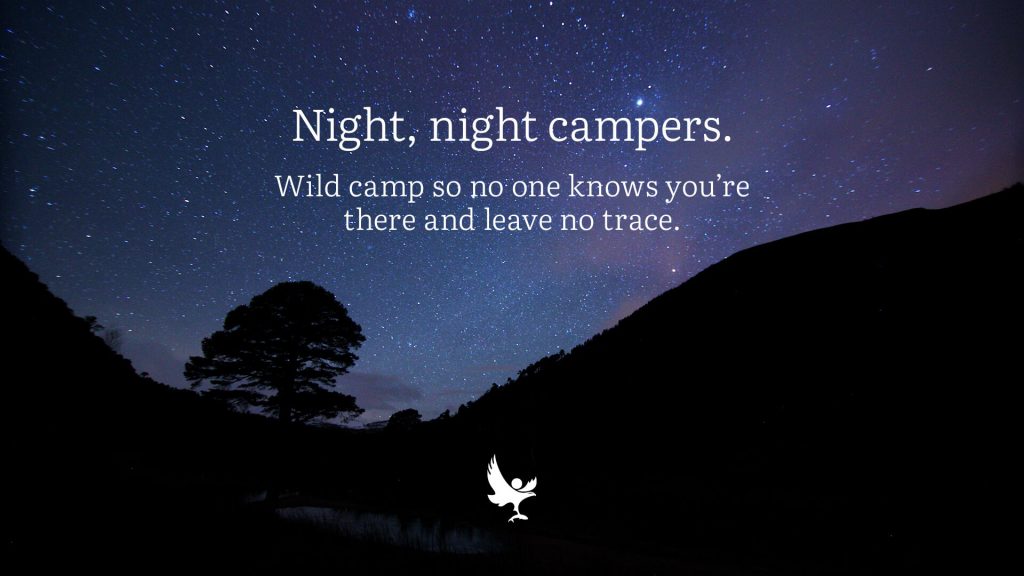 Wild camping
Wild camping
Wild camping is carrying all your kit in your rucksack (or on your bike, horse or canoe) and is usually a part of a journey or expedition. It is done in small numbers and only for two or three nights in any one place. You may wild camp in the National Park if you do so responsibly.
If you need more gear than you can carry, or you want to have a flushing toilet on hand – this is an indication that wild camping isn’t for you and an official campsite will be a better option.
There are a range of lovely campsites across the Park which can offer the best of both worlds – a remote feeling and the back-to-nature camping experience and the appropriate facilities for you needs, ensuring you are being a responsible camper and helping us keep the Cairngorms a special place.
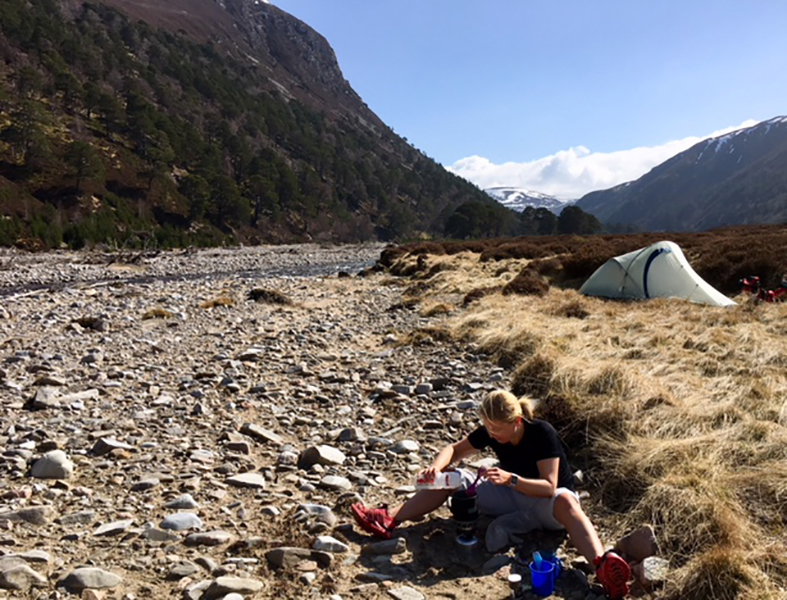
Advice on wild (backpack) camping
- Camp in small numbers only and don’t stay in the same spot for more than two or three nights.
- Do not light a campfire, be prepared and take a gas stove.
- Leave no trace - take all your litter away and remove all traces of your camp pitch.
- Consider your campsite location - keep away from enclosed fields of crops or farm animals and keep away from buildings, roads, and historic structures.
- Take care to avoid disturbing wildlife such as deer, capercaillie, and grouse.
- If it is busy, move on and find a quiet spot for yourself.
First things first, if you can, make sure you ‘go’ before you go. Check the locations of Public Toilets here before you go.
Plan ahead and carry a toilet kit – a trowel, plastic bags, toilet paper and hand sanitiser. You can also get special outdoor poo packs (Dicky bags allow you to carry dog and human waste safely) or even portable toilet bags.
If you need to ‘go’ please follow this guidance:
- Urinate at least 30 metres from lochs, rivers, and streams and somewhere private!
- If you need to poo – dig a hole and bury it and replace the turf. Do this well away from buildings, paths, well-used areas and water.
- Bag up and pack out any toilet paper and sanitary items
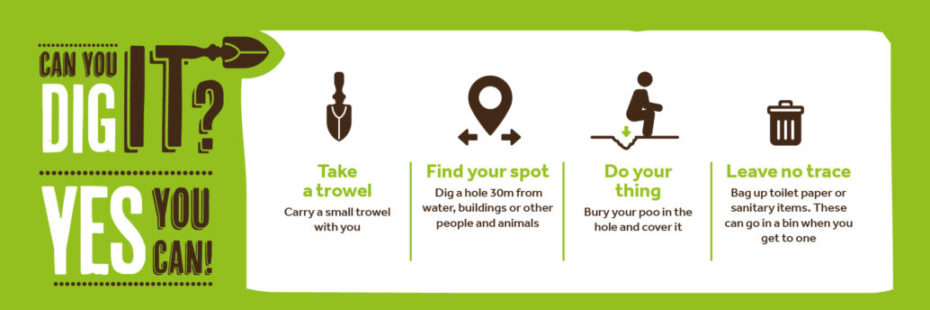
If it’s not possible to dig a hole to bury your poo be prepared to pack it out:
If you are planning to park up overnight please read the Guide to Campervanning in the Cairngorms which has loads of information like fantastic caravan and camping site options, as well as parking spots, public toilets, waste disposal outlets, recycling points, fuel stations and much more. There is a campervan facilities map in the guide which you can view or you can download.
In order to park up responsibly please follow this guidance:
- Check out the Campervan Facilities map to find the facilities you’ll need like waste disposal options and recycling points
- Take care not to block any forest, estate, or farm entrances
- Observe any local guidance, including specific requests not to park overnight in particular areas
- Respect peoples privacy, consider your impact on local residents and wildlife
- Please do not light campfires, even in fire pits. Take care with barbecues and do not barbecue at times of ‘High Fire Risk’
- Do not leave any litter behind, ensure you leave no trace of your overnight stop
- If you do not have an on-board toilet follow the guidance on outdoor toileting (see drop down above)
- Shop local and support local restaurants and services
- Consider using managed caravan/campsites. To find the best site for you Visit Cairngorms has lots of ideas.
Please remember:
- Access rights in Scotland do not include motor vehicles
- Always ensure you are parked responsibly without causing an obstruction to access or passing traffic
- If you choose to stop in a lay-by, please make yourself aware of all road traffic regulations associated with this type of parking
- Passing Places, unlike lay-bys, are not meant for stopping and are a crucial part of the single track road network in the National Park. Passing places must be kept clear to allow the free flow of traffic.
If you have a vehicle with a roof tent and then the formal campsites around the National Park will offer the most suitable ground for this kind of setup. A list of campsites can be found at VisitCairngorms
If you don’t plan on heading to a campsite please follow all the guidance for Campervans (see above drop down)
Please remember:
- Access rights in Scotland do not include motor vehicles
We welcome Duke of Edinburgh participants who wish to use the Cairngorms National Park for their expeditions. Please follow this guidance at all times:
Pre-planning
- Ensure you are familiar with the Scottish Outdoor Access Code.
- Review the resources on the DoE website regarding expeditions in the Cairngorms National Park. The most up to date copy of the Greater Cairngorms Information Pack is on this page. There is a lot of helpful information here regarding permitted camping locations, specific bookable DoE camp locations and specific site advice.
- Be aware that the regular / promoted areas can become overused and may be busy, so try and plan new and different camp locations to head to.
Overuse of sites impacts both on the environment (such as ground damage and wildlife disturbance) and on other people’s enjoyment of the countryside. - Consider a different type of trip that might take you away from the busy areas, like a cycling or canoeing expedition.
On your expedition
- Follow the wild camping guidance at all times and ensure that you leave no trace of your camping pitch.
- Take care with cooking stoves, especially during time of ‘high fire risk’.
- Be discreet and respectful – ensure you don’t disturb wildlife or other people.
Further advice
If you need any further advice or contact details for estates / landowners please contact the Outdoor Access team for assistance:
Cycling and mountain biking
Cycling is a great way to explore and enjoy the Cairngorms National Park. You can help to keep the Park a special place for everyone by respecting others and doing your bit to care for the environment when riding off-road:
- Respect other users – slow down and give way to walkers and horses. Be friendly!
- Protect wildlife – avoid disturbing ground nesting birds or other wildlife. Keep to the track in sensitive areas to prevent damage to plants or disturbance to specific species.
- Be aware of land management – follow any signage about tree felling, deer stalking, livestock etc. Check websites for updates when you plan your ride.
- Reduce your impact – right light to avoid damage to the trail and landscape. Try to avoid wet, boggy, soft ground, especially in winter.
- Keep trail dogs close – ensure your ride companion is kept under proper control. Take extra care around livestock and ground nesting birds.
- Stay safe – the Cairngorms is a big landscape with remote areas – plan ahead and consider the terrain, the difficulty of the route, the weather forecast and your own skills and abilities.
Have fun exploring the Cairngorms National Park by bike!
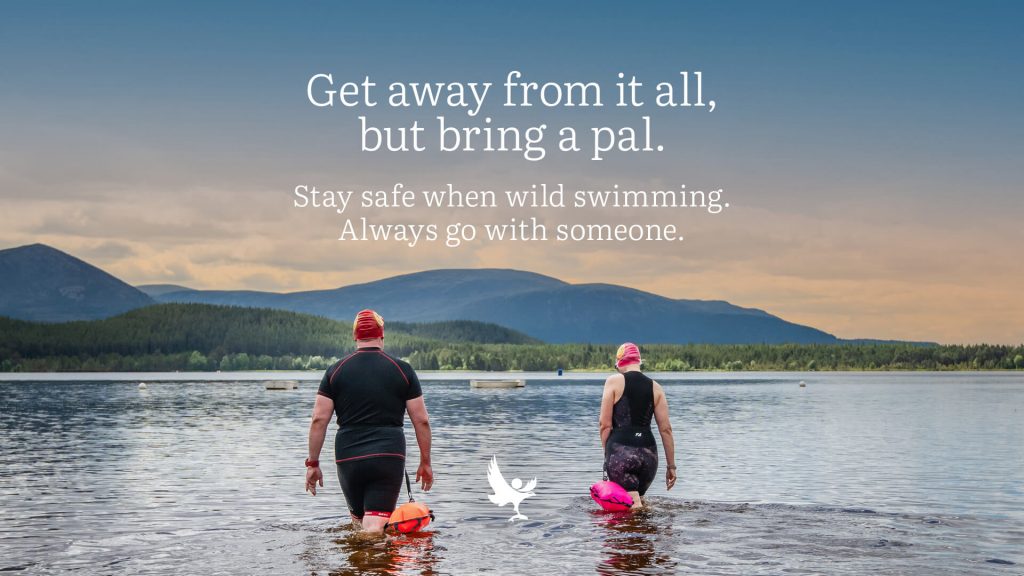 Water sports
Water sports
A lot of our stunning lochs and rivers are popular places for wild swimming, canoeing and stand up paddleboarding but please remember these are shared spaces with wildlife and anglers too.
- Give wildlife space – don’t paddle or swim directly towards wildlife and avoid nesting areas such as islands or bays with vegetation.
- Some lochs have zoned conservation areas or seasonal restrictions to protect wildlife – please follow any local signage and guidance from site staff.
- Be friendly to other water users such as anglers – follow their direction as to which way to pass.
- Take care not to damage vegetation or banks when you get in and out of the water and ensure you have parked respectfully – not blocking any gates or access tracks.
- Stay safe – the water can be cold and weather conditions change quickly here. Go with a friend and always wear a buoyancy aid for water sports.
Stand up paddleboarding (SUP) is a great way to enjoy a leisurely paddle and explore lochs from a different perspective. However, if you are new to stand up paddleboarding (SUP) it’s always advisable to get a lesson first. Read more about SUP activity providers and where to go Stand Up Paddleboarding in the Cairngorms
Before you go out paddleboarding ensure you know the risks, stay within your capabilities and ensure you have the appropriate safety gear.
Read more about how to stay safe when paddleboarding
No – motorised activities, including the use of any powered craft on water, are excluded from access rights.
All types of electric motor including; trolling motors, electric boat motors, efoils, SUP / kayak motors etc are not permitted under access rights and therefore these motorised craft cannot be used on inland waters or rivers. These activities require the permission of the relevant owner or manager.
Deer stalking 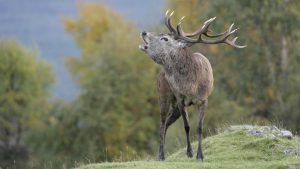
Deer stalking in Scotland takes place particularly during the summer and autumn on estates in many popular hill walking destinations in the Park. Before heading into the hills you should plan ahead and seek information on where stalking might be taking place and if necessary, adapt your route appropriately to minimise the chance of disturbing stalking, in line with the Scottish Outdoor Access Code.
- The Heading for the Scottish Hills website is the main source of information on stalking activity with contacts for estates. This website isn’t fully comprehensive so please always proceed with caution during the stalking season.
- You should avoid crossing land where stalking is taking place and be prepared to follow all reasonable requests, for example from an information sign or a stalker.
Deer stalking is an essential part of sustainable deer management in the Park, supporting biodiversity in the mountain landscape, aiding woodland regeneration and contributing to the local economy.
Deer management can take place between July and February, but the most sensitive time is the stag stalking season, with most stalking taking place between August and October.
Although stalking can take place at anytime, the two key stalking periods are around:
- 1st to 20th October – for stags
- January – 15th February – for hinds
Stalking doesn’t usually take place on a Sunday, but this is not the case on all estates and therefore you should still seek information and plan ahead.
Effective deer management is essential to ensure sustainable deer populations (they have no natural predators) and to conserve our natural habitats. Maintaining deer numbers prevents them overgrazing upland areas, aids woodland regeneration, conserves biodiversity and prevents damage to trees and crops. It also protects the deer from starvation and disease, and provides economic benefits to rural economies.
More information about deer management – West Grampian Deer Managment group
Winter sports
 When there is snow on the ground it’s ski season! The high altitude of the Cairngorms National Park creates great opportunities for cross country skiing, snowshoeing, ski touring and ski mountaineering. When the snow transforms the landscape into a winter playground, please remember to enjoy it responsibly.
When there is snow on the ground it’s ski season! The high altitude of the Cairngorms National Park creates great opportunities for cross country skiing, snowshoeing, ski touring and ski mountaineering. When the snow transforms the landscape into a winter playground, please remember to enjoy it responsibly.
- Park considerately taking care not to block gates, access routes or park on road verges – remember the snow ploughs need plenty of space to pass.
- If ski touring near a ski resort area, follow the Snowsports Touring Code.
- Make sure you are well prepared and suitably experienced for the winter conditions.
“It's a walk in the Park to Tread Lightly”
Outdoor Access – other FAQ’s
 You can find more information regarding outdoor access and rights and responsibilities on the Scottish Outdoor Access Code website. You can also download our handy ‘Tread lightly in the Park’ leaflet. The leaflet is also available in ten other languages.
You can find more information regarding outdoor access and rights and responsibilities on the Scottish Outdoor Access Code website. You can also download our handy ‘Tread lightly in the Park’ leaflet. The leaflet is also available in ten other languages.
If you need more advice regarding access in the Cairngorms National Park you can contact our Access team on [email protected]
Recreational and personal use of drones and model aircraft are not within access rights and local restrictions may apply. It is advised to check with the landowner or occupier for permission to use a drone.
More generally the use of drones is regulated by the Civil Aviation Authority (CAA) and their regulations regarding licencing are a legal requirement for flying any drone.
The CAA Drone Code must be adhered to, with an emphasis placed on personal responsibility. This includes:
- Respecting other people, their safety and privacy – there are restrictions (depending on the size of drone) as to how close you can fly to a person, vehicle or building.
- Not flying anywhere where you will disturb or endanger wildlife or animals (including livestock). Restrictions may also exist in areas specifically designated for wildlife such as Sites of Special Scientific Interest (SSSI’s).
No – products such as hoverboards, segways, electric scooters (go-peds), powered unicycles, trolling motors on boats. SUP motors or efoils etc. are classified as “powered transport” and these types of electric transports cannot be used in the Cairngorms National Park or in any area of countryside (nor on any public road).
These powered transports are not within access rights and can only be used on private land / water where you have the express permission of the landowner.
Electric bicycles* are classed as a type of pedal cycle and can be used in the countryside in the same way that a standard bicycle can.
(*E-bikes must have pedals to propel it, a limited speed of 15.5mph, a max power output of 250watts and a plate showing manufacturer and these details).
You are permitted to pick wild mushrooms and berries for your own consumption – however you should always follow the guidance in the Scottish Wild Mushroom Code, and care for the environment.
Please note – if you are collecting mushrooms for commercial purposes or for profit then legally you must have the permission of the landowner.
Pheasant shooting takes place during the autumn and winter in woods and forests and on adjacent open ground. Avoid game rearing pens and keep your dog on a lead or at heel when close to a pen.
Grouse shooting takes place on moorland areas, the season runs from 12 August to 10 December, with most shoots taking place during the early part of the season.
You can help to minimise disturbance by being alert to the possibility of shooting taking place on and taking account of advice on alternative routes. Avoid crossing land where a shoot is taking place.
There are some circumstances when it may be necessary to seek landowner permission for an event that you are planning to run.
We have a guidance document that has been written to help event organisers and land managers in the planning and management of organised outdoor events in the Park. It should also be of interest to many other people, including community groups, businesses and public agencies – anyone who is interested in outdoor events and how they are managed.
Download the outdoor access event guidance
For further advice please contact the outdoor access team: [email protected]
VisitCairngorms have also produced a helpful Event Planners Guide which will help you find locations and venues, plan transport links and connect with communities, suppliers and local businesses.
The Cairngorms National Park is a great place for getting outdoors but like the rest of Scotland, you should protect yourself from the tiny biting parasites known as ticks.
The four top tips for preventing a tick bite are;
- Stick to paths and avoid long grass, bracken, and heather.
- Cover exposed skin if you are walking through long grass, bracken, and heather.
- Use a recommended insect repellent.
- And most importantly check yourself for ticks at regular intervals.
For advice on removing ticks and the signs and symptoms of Lymes disease, the Highland Council has a useful guide linked here.
If you need to report an access issue or a path obstruction please email us:
In your email please include:
- Your name and contact details
- Date the problem occurred
- The location, including OS grid reference
- Any photographs
- Description of the issue. Please include – details of how your access rights were obstructed, the activity you were undertaking, where the path leads to and from or the feature visited and any other relevant information.
News & Announcements
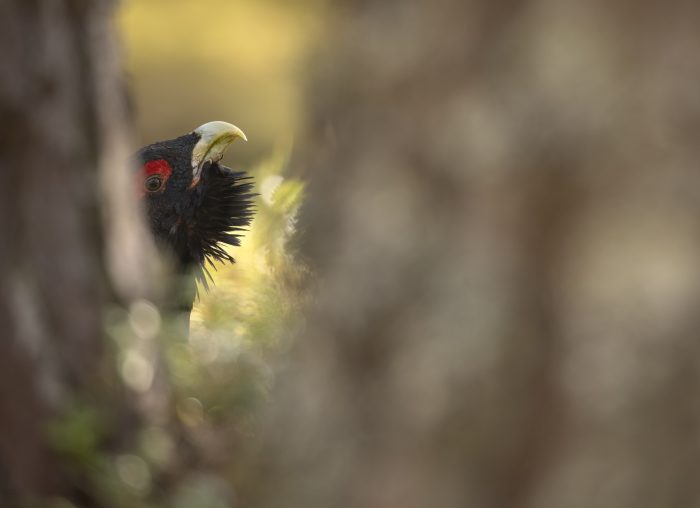
02/04/2024
Outdoor Access
Birdwatchers, photographers and wildlife guides thanked for leaving capercaillie in peace this spring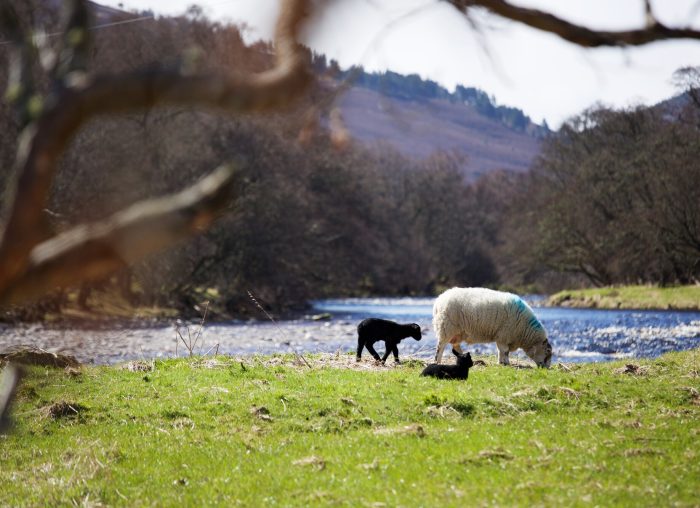
29/03/2024
Outdoor Access
When it comes to your dog and livestock – do the right thing this spring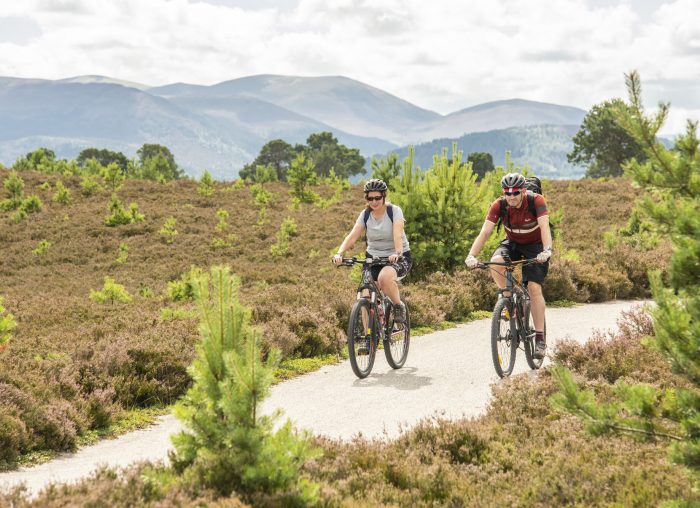
17/02/2023
Outdoor Access
Making the Park more walking, cycling and wheelchair friendly